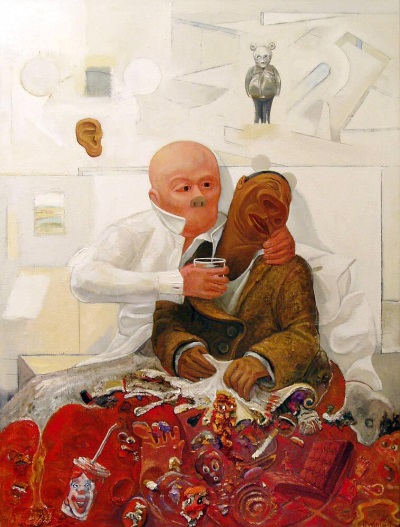An interdisciplinary program for Wayne State University medical students that blends art and medicine was showcased by the Association of American Medical Colleges this month for the project, “Using Visual Thinking Strategies to Enhance Observation Skills Through Art and Imaging.”

WSU was awarded a grant earlier this year by the AAMC as part of the organization’s Fundamental Role of Arts and Humanities in Medical Education Initiative to provide School of Medicine students training in observation and drawing of original works of art.
The program uses the university art collection to learn and practice Visual Thinking Strategies, or VTS, to enrich first- and second-year medical students’ visual literacy, art therapy students’ visual literacy, and the ability to translate and interpret imaging important in the understanding of the patient perspective in relationship to their health.
The program coordinators at WSU are David Amponsah, M.D., School of Medicine assistant professor of Emergency Medicine and director of Emergency Medicine Ultrasound Education and Fellowship at Henry Ford Hospital in Detroit; Holly Feen-Calligan, Ph.D., associate professor of Theoretical and Behavior Foundations and Art Therapy Program coordinator for the College of Education; Grace Serra, WSU Art Collection curator; and initially Jennifer Mendez, Ph.D., who retired as director of Community Engagement for the School of Medicine earlier this year.
The skills are helping medical students overcome difficulty in translating two-dimensional ultrasound monitor images to three-dimensional anatomical structures, and helping art therapy students develop better assessment skills.
Through the practice of Visual Thinking Strategies in mixed groups of art and medical students, learners develop acute visual skills, and enhance critical thinking and interprofessional collaboration. The development helps advance awareness of implicit bias and analysis of varied viewpoints.
For example, the painting “Barcelona” by Peter Williams was used in one of the VTS sessions for the dual purpose of helping students develop ultrasound interpretation skills and awareness of implicit bias. The patient in “Barcelona” is the artist himself, recalling the many months he spent in a hospital recovering from a car crash, an event that changed the course of his life. The work provides detail and symbolism to decipher, and provides poignant commentary on race and culture.
WSU’s pilot study involves 30 medical students, 30 art therapy students and 10 arts administration students. Data on the frequency of accurate reading and observations on ultrasound visual skills examination pre- versus post-training is being collected and evaluated.
In January, the AAMC awarded WSU one of eight $25,000 grants funded in part by the National Endowment for the Humanities to U.S.-based member medical schools and teaching hospitals working on arts and humanities programs.